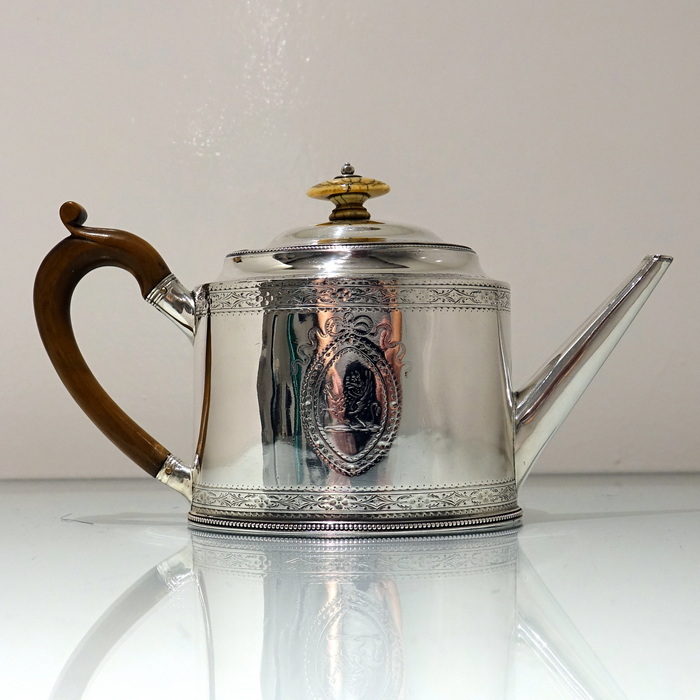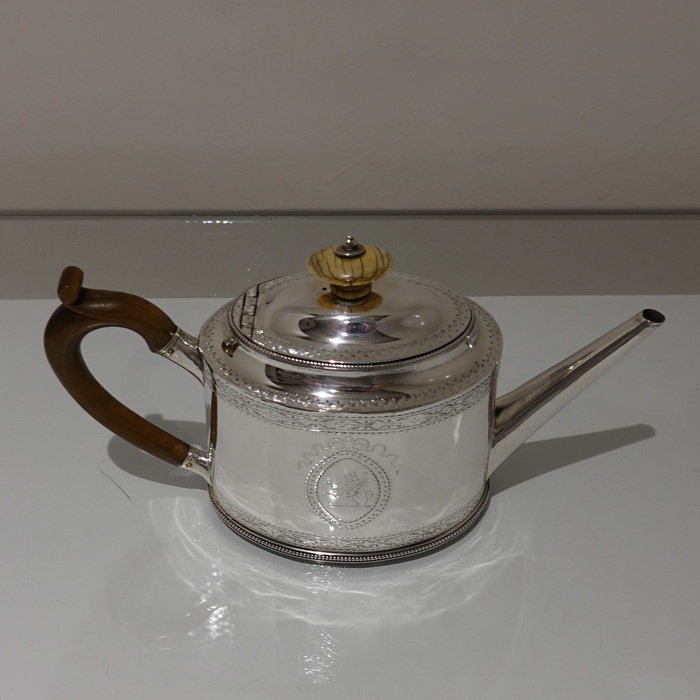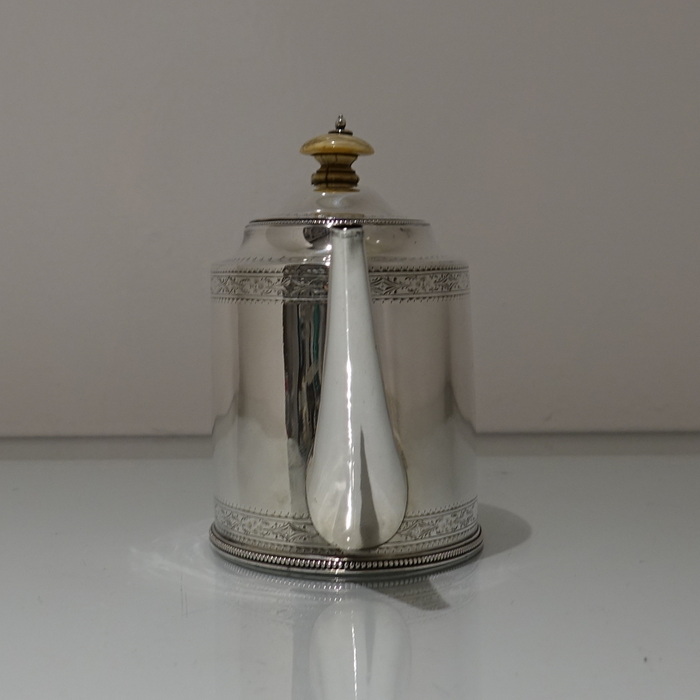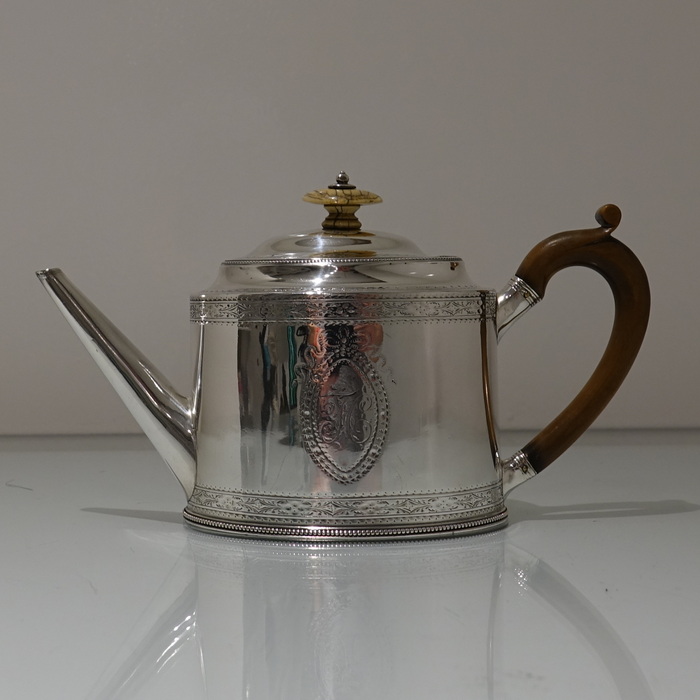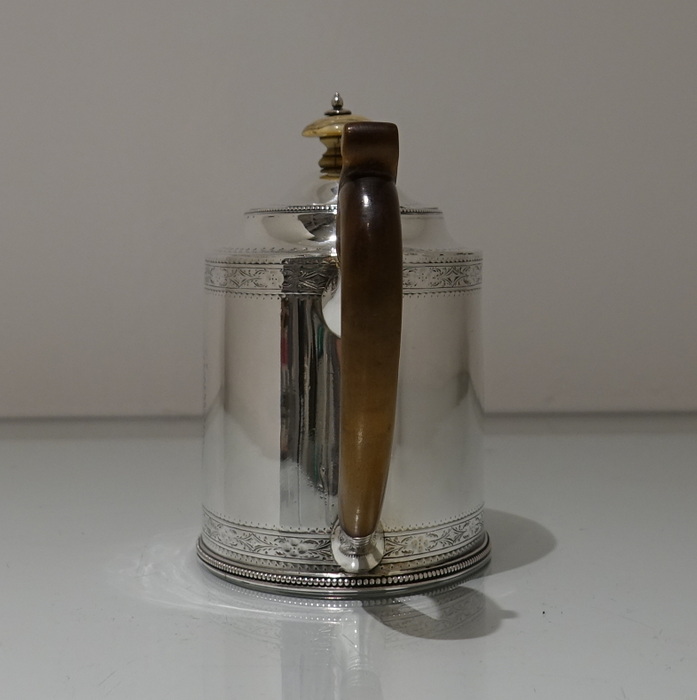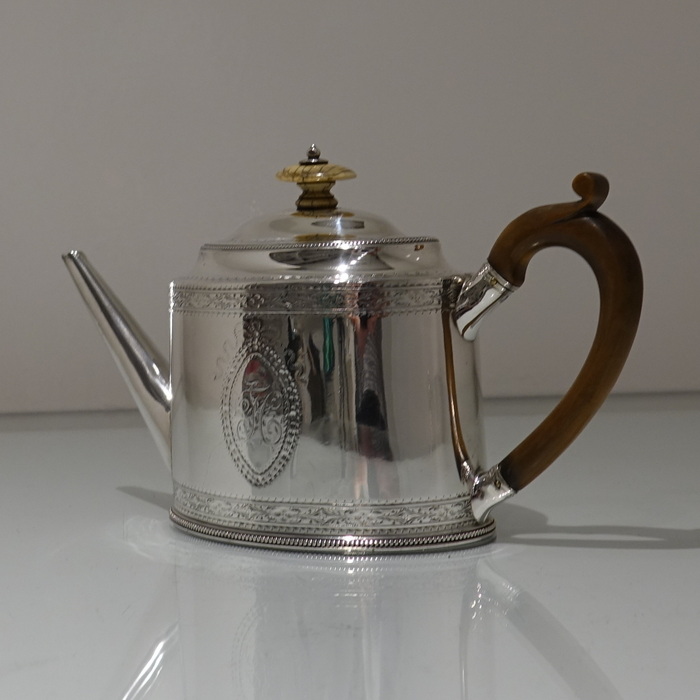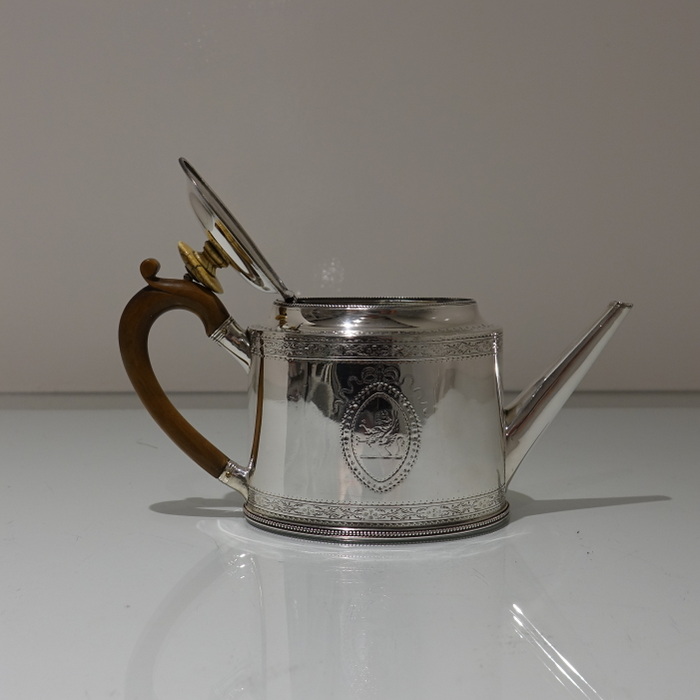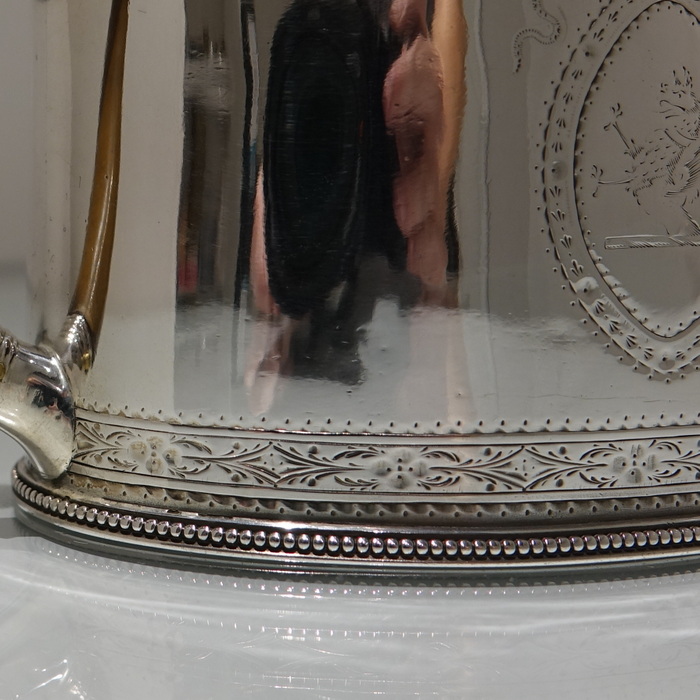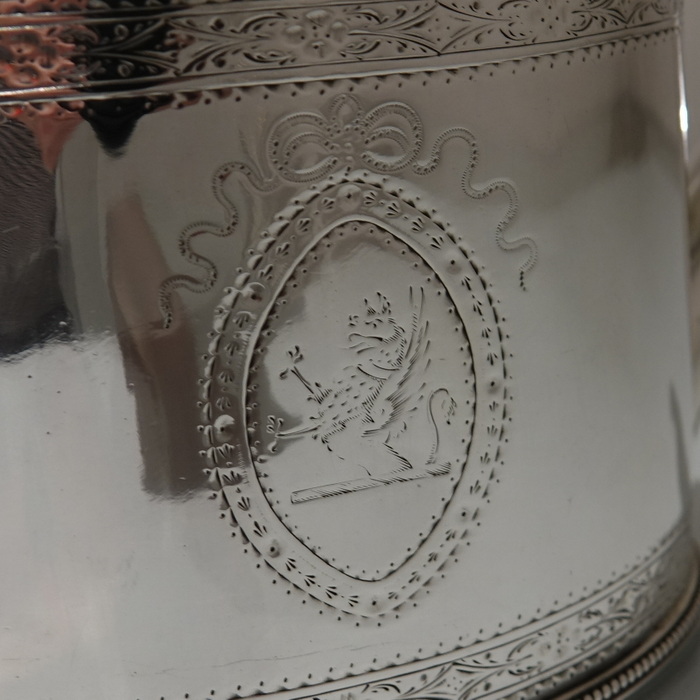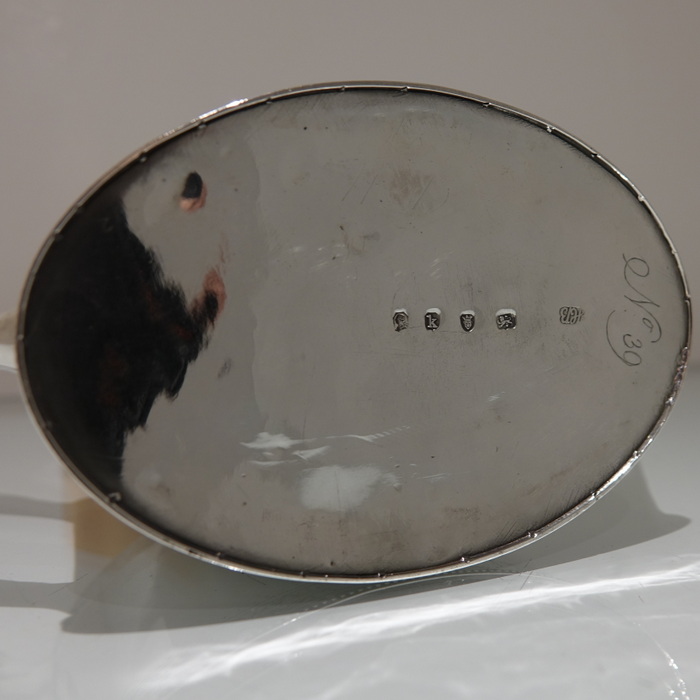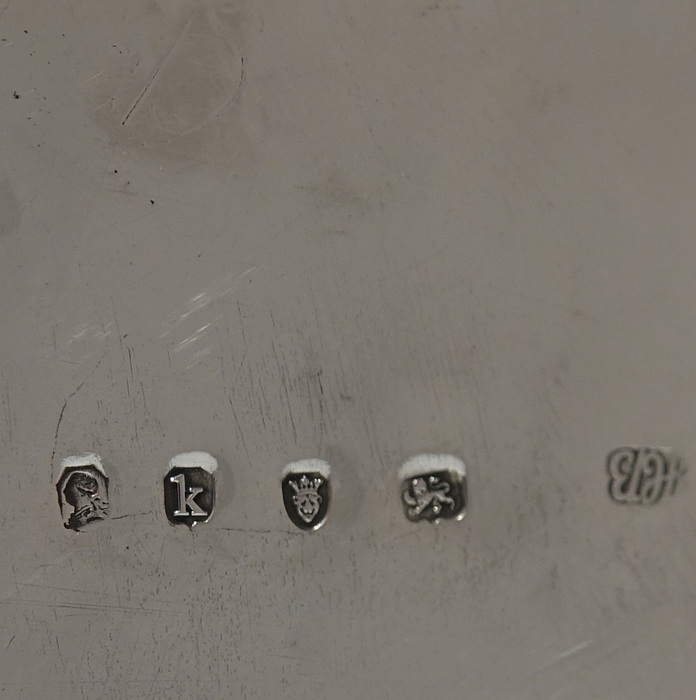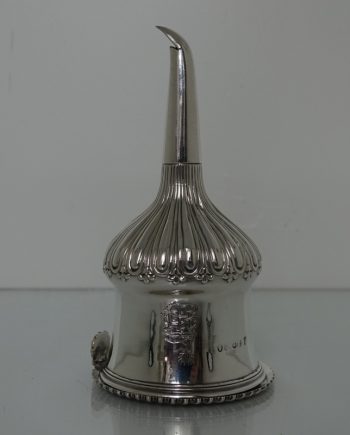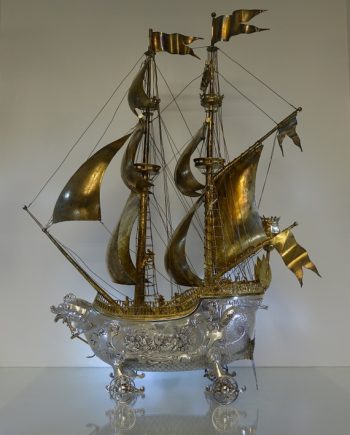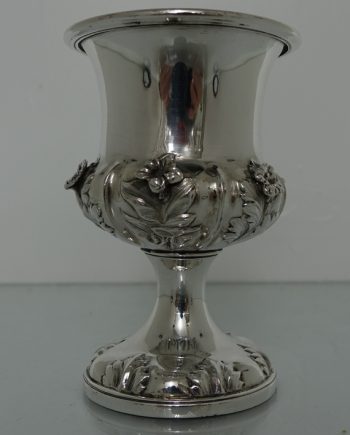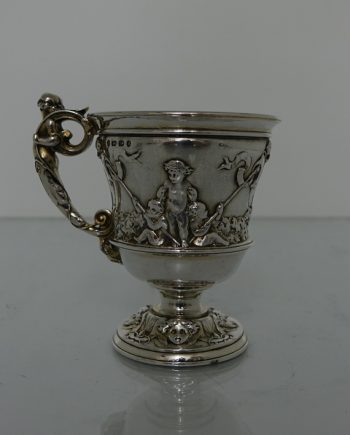Description
A highly collectable two band bright cut engraved oval teapot with applied upper and lower bead wires. The spout is the highly desirable “straight” style and the fruit wood handle is scroll formed. Both sides of the body have elegant oval cartouches in which sits contemporary initials and armorial for importance.
Weight: 12 troy ounces/381 grams
Height: 5.5 inches/13.9cm
Length: 10 inches/25.5cm
Width: 4 inches/10cm
Condition: Excellent throughout
Price: £1750
HESTER BATEMAN (1709-1794) was the most famous 18th c. English female silversmith. Hester was the daughter of John and Elizabeth Nedem. She married in 1732 (at the Church of St. Botolph’s, Aldergate, in the City of London) the goldsmith John Bateman, whereby together they worked a small silversmith business. It is believed John never held a formal apprenticeship, which is why many Bateman pieces had been contracted out to talented craftsmen. John was a “Chainmaker” (a branch of the silversmiths’ art) and died on November 13, 1760 leaving in his will “unto my loving wife, Easter Bateman all my household goods and implements”. When her husband died in 1760, Hester had at least five children – Jonathan, Peter, probably John (who may have been connected with the business, although he is only recorded as a watch and clock-maker), Letitia (who married Richard Clarke), and Ann. Only Peter, Letitia, and Ann were still living at the time of Hester’s death. Hester registered her mark at Goldsmith’s Hall ‘April 16, 1761, as Hester Bateman in Bunnhill Row and this mark was used until 1790.
Hester died in 1794, when she was living in the Parish of St. Andrew when she lived with her daughter Letitia.
Her sons PETER BATEMAN and JOHN BATEMAN registered their mark in 1790. This partnership was of short duration as Jonathan, who married Ann Downlinff, died in 1791. In 1791 the mark was changed to PETER and ANN BATEMAN. Ann was Jonathan’s widow and not Peter’s wife (he married Alice Beavoir) or Hester’s daughter (Ann Bateman married Richard Cottrill). In 1800 was registered the mark of PETER BATEMAN, ANN BATEMAN and WILLIAM (I) BATEMAN. William Bateman was the son of Jonathan and Ann Bateman who in 1800 entered in partnership with his uncle Peter and his mother Ann. In 1805, after the retirement of Ann, was registered the new mark of PETER BATEMAN and WILLIAM (I) BATEMAN.From 1815 to 1840 WILLIAM (I) BATEMAN was registered alone. From 1839 to 1843 was registered the mark of WILLIAM (II) BATEMAN (son of William I) & DANIELL BALL.



